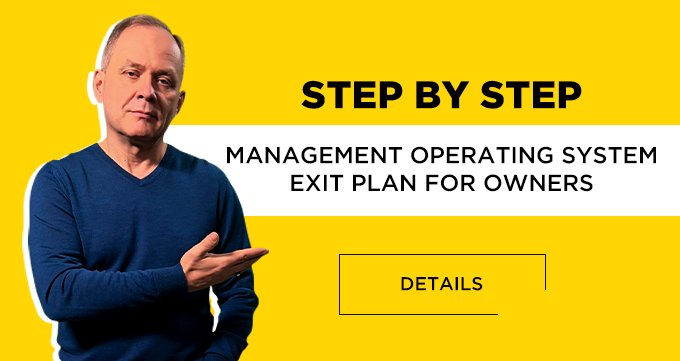Why Employees Don't Work Without You and How to Fix It
Many business owners face a situation where work proceeds normally while they are in the office, but slows down or stops as soon as they leave. It seems the team cannot function without constant supervision.
This is a symptom, not a cause. A symptom is a manifestation of a problem, while the cause is what triggers it.
Many try to combat this with fines, threats, and strict control, hoping that discipline will improve. But in practice, this doesn't solve the problem. If employees can't work without your constant oversight, it's not about their laziness or irresponsibility. The issue is deeper: in the lack of well-established communication and systematic management.
Why Control Doesn't Solve the Problem
Companies that only operate under the strict supervision of the owner are in the stage of manual management. Owners spend time controlling every detail instead of focusing on business development.
Often, in such situations, they try to solve the problem in the wrong place. For example, if the owner is a strong salesperson, they continue to study sales. If they manage manually, they look for ways to strengthen control, rather than change the management system itself. As a result, the problem is not solved but exacerbated.
The real solution is not in tightening discipline, but in creating a mechanism that works without constant owner control.
How to Make Your Business Work Without You
This requires a Business Operating System. This is not just a set of rules and instructions, but a system where employees know exactly:
- What their responsibilities are.
- How to interact with each other.
- Which performance indicators are important.
When processes are established in the company and employees have clear areas of responsibility, constant owner supervision becomes unnecessary. Instead of endless control, the manager gets the opportunity to develop people and improve the management system.
How to Transition from Chaos to Systematic Management
In a properly organized company, there are plans, coordination, reports, and metrics. The owner doesn't need to monitor every step of the employees – they see the results and understand which processes need improvement.
Control turns into support: instead of punishing for mistakes, the manager helps the team develop. In such a system, employees begin to work consciously, understanding what they are doing and why. This reduces resistance, increases productivity, and allows the business to grow without constant owner intervention.
I discuss in more detail how to build a system where employees work effectively without total control at the open master class "How to Strengthen Your Team, Fortify the Foundation of Your Business, and Reach a New Level." Registration for the master class via the link: https://go.bbooster.online/master1. There, we will analyze specific tools that will help you implement a Business Operating System and transition to management based on clear processes, not endless control.

